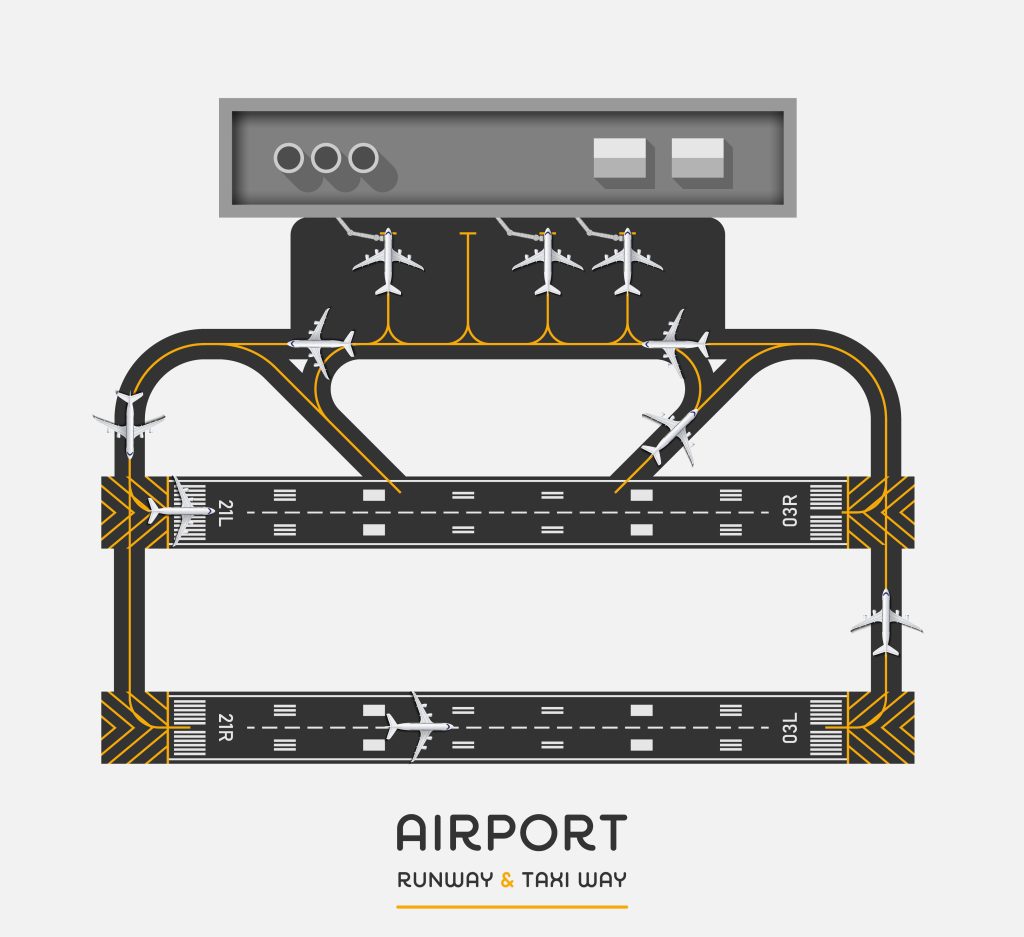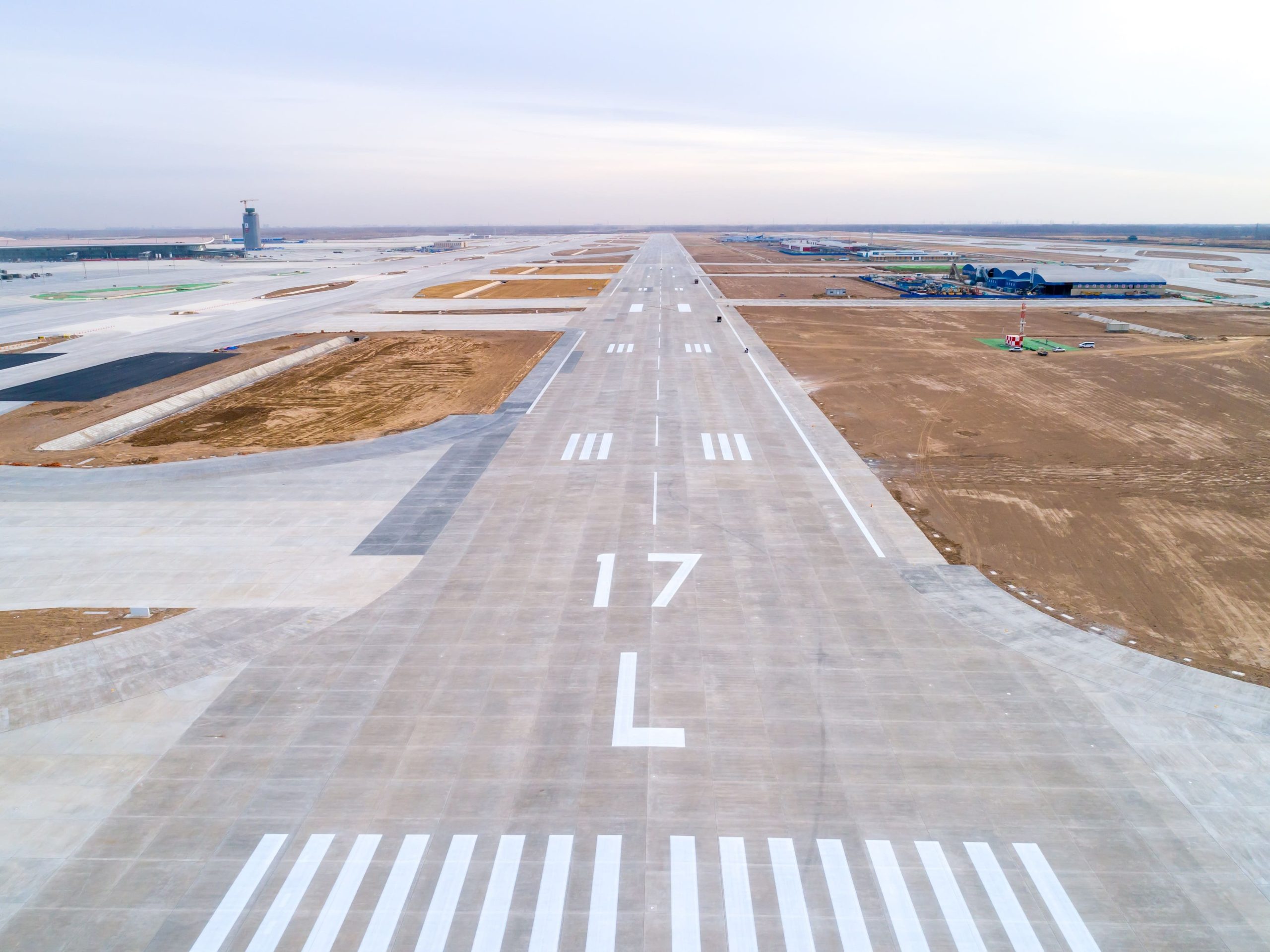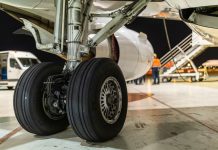If you drive a car or ride a scooter or bike, you’ll certainly be familiar with the markings painted on the tarmac. You know when to stop, overtake or watch out for pedestrians crossing the street.
Markings are a fundamental tool for managing mobility on the ground. Runways and taxiways are no exception.
Markings on airport runways follow specific and standardised rules all over the world. Let’s have a look at what they are.
Markings in general

The first thing you see on runways is a big number painted in white at the beginning and the end of the runway. The number indicates the angle the runway makes relative to the magnetic north pole, also called the magnetic heading.
If the number is accompanied by the letter L, R or C, it means that there are parallel runways at the airport. The letters show the runway’s position in relation to the others: left, right, central.
The second thing you might have noticed is that some of the lines are white while others are painted yellow. These colours are used to show the difference between the runways and the taxiways, i.e. the routes for aeroplanes to move from one spot to another on the ground.
Safety areas
There are a number of safety areas surrounding each runway.
The runway is surrounded by the runway strip, a rectangular strip of land free from obstacles.
At the end of the runway, in the take-off direction, there is an area of land called the stopway. It can support the weight of an aeroplane if it is forced to abandon take-off. The stopway is usually inside a clearway, which is free from horizontal or vertical obstacles and is either on land or water.
Triangles and lines

Right before the beginning of every runway is a blast pad, a reinforced area that is resistant against the erosion caused by jet engines and marked with a yellow herringbone pattern.
After that, we find what really looks like a pedestrian crossing (but pedestrians are most definitely banned here!). The runway threshold is at least 30m long and marks the beginning of the runway area that can be used for take-off and landing.
(If the runway threshold is moved further forward, referred to as a displaced threshold, a series of arrows pointing towards the threshold is painted between the blast pad and the runway threshold).
Another important symbol is the touchdown point or aiming point. These are two big white triangles that indicate the ideal contact point for landing.
Lastly, if you happen to see a runway marked with two big yellow X at either end, this is a closed strip which cannot be used.
That’s all from us today!




